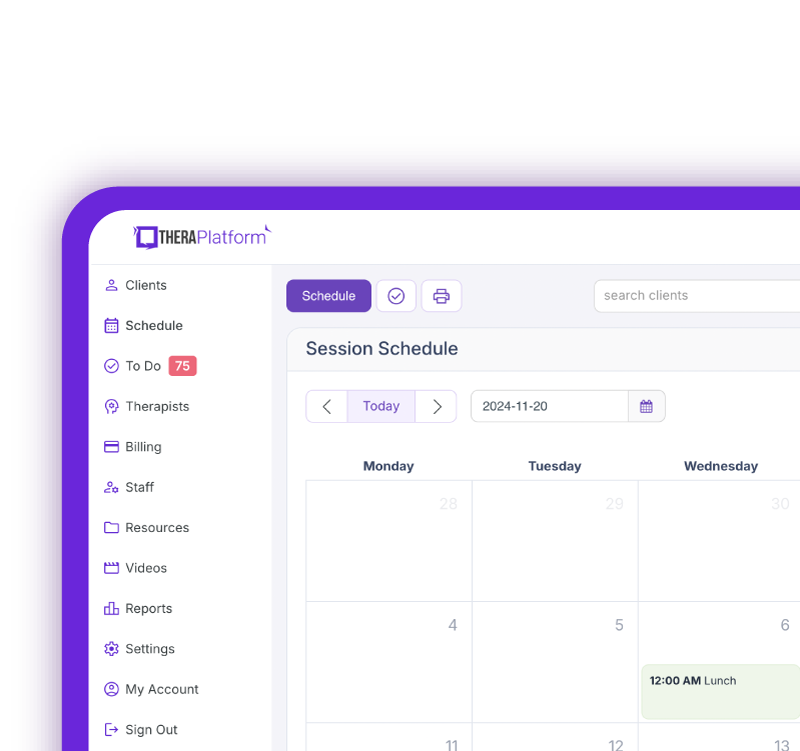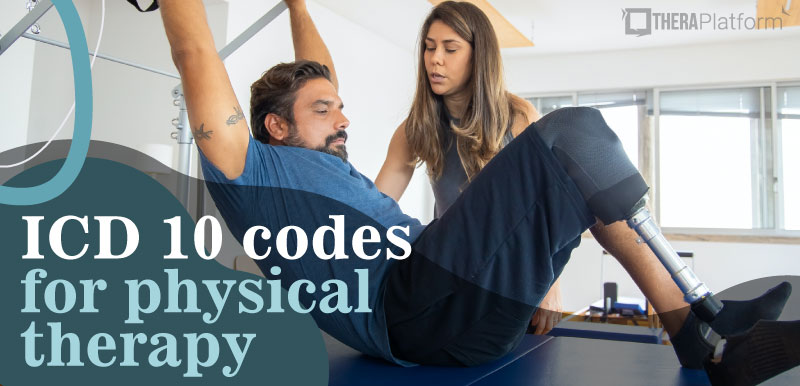Left knee pain ICD 10 code

A left knee pain ICD 10 code is used regularly by physical therapists as the condition is common and has several causes. Osteoarthritis, one common cause of left knee pain, for example, was found in the knees of more than 22% of individuals forty years of age and older according to a large meta-analysis published in 2020.
Summary
- Left knee pain is a common condition treated by physical therapists, with causes ranging from osteoarthritis and sports injuries to ligament tears and overuse—making accurate diagnosis and coding essential for reimbursement and care planning.
- The specific billable ICD-10 code for left knee pain is M25.562, which should be used to indicate that left knee pain is a primary focus of treatment. Using more general codes like M25.5 can lead to denied claims due to lack of specificity. Enrolling in an insurance billing course for therapists can help providers enhance their knowledge.
- Supplemental diagnosis codes may be required to fully capture the cause of knee pain—such as meniscus injuries (S83.242D), osteoarthritis (M17.12), or patellofemoral disorders (M22.2X2)—and external cause codes (e.g., sports injuries, overuse) can provide further detail.
- By leveraging an EHR like TheraPlatform for efficient documentation and claim submission, therapists can tackle billing with ease.
→ Click here to enroll in our free on-demand Insurance Billing for Therapists video course [Enroll Now]
Sports injuries are another common cause of knee pain. In fact, a 10-year study published in 2006 gathered data from over 17,000 athletes and found that 37% of them experienced an injury to their knee.
Other potential causes of knee pain include:
- Contusion
- ACL/MCL/PCL/LCL sprain or tear
- Patellofemoral syndrome
- Patellar dislocation
- Patellar chondromalacia
- Patellar tendinitis
- IT band syndrome
- Meniscus injury
- Fracture
- Bursitis
- Rheumatoid arthritis
- Gout
As you can see, with so many conditions affecting the knee, the ability to assess and treat left knee pain is an important skill for any physical therapist. Whether acute, chronic or recurrent, knee pain can have a significant impact on functional mobility and quality of life and since you will likely encounter this symptom in your practice, understanding how to correctly use a left knee pain ICD 10 code is important. Proper coding is essential to communicate that treatments are medically necessary and will help minimize claim denials. To help you in this endeavor, this article will guide you to select the most appropriate left knee pain ICD 10 code.
Streamline your insurance billing with One EHR
- Claim batching
- Auto claims
- Automated EOB & ERA
- Real-time claim validation
- Real-time claim tracking
- Aging and other reports

If you, like many therapists, have some experience searching for and selecting a left knee pain ICD 10 code but don’t have a good understanding of the who, what, when and why these codes are used, see the next section for an left knee pain ICD-10 code primer. Following this introduction we will discuss the left knee pain ICD10 code in more detail.
An introduction to the left knee pain ICD-10 codes
Who: All HIPAA-covered entities are required to submit ICD-10 codes if seeking
reimbursement for services from an insurance company. This includes physical therapists.
What: The International Classification of Disease, 10th Revision (ICD-10) is a set of diagnosis, symptom, and procedure codes that physical therapists use daily in their practice. In 2015 physical therapists and all other HIPAA-covered healthcare providers transitioned from the ICD-9 to the current version, ICD-10. ICD-10 codes are alphanumeric codes. They begin with a letter and are always between three and seven characters with a decimal point placed after the third character. The more characters it has, the more specific it is.
Each code follows the following structure:
- Characters 1-3 indicate the category of the diagnosis
- Characters 4-6 indicate etiology, anatomic site, severity or other clinical detail
- Character 7 is an extension value, for example:
- A: initial encounter (anything related to care of the initial injury)
- D: subsequent encounter (anything related to the phase of routine care of the injury while the patient recovers–this usually refers to rehabilitation)
- S: sequela (other conditions that may result from the presence of the primary condition)
Note, for fracture care, there are several more extensions ( example: P, G, K, which signify malunion, delayed healing, or nonunion for a subsequent encounter)
You will submit a primary diagnosis code (the primary reason you are treating the patient) and any other relevant diagnosis codes.
When: ICD-10 codes must be submitted with relevant documentation whenever reimbursement is sought for covered services either by the healthcare entity itself or by a patient.
Why: While it may seem like an extra step in an already detailed process of documentation and billing, ICD-10 codes are required for a specific reason. Not only do they identify a medical diagnosis, but perhaps more importantly, they help insurance companies understand why the care you are providing is medically necessary and therefore, reimbursable.
Left knee pain ICD 10 code: M25.562
This left knee pain ICD 10 code should be utilized whenever a patient is presenting with pain in their left knee that will be the focus of part or all of your interventions. As you can see, this code has six characters.
When selecting the left knee pain ICD 10 code, the code with the highest number of applicable characters should be chosen, at least on the first visit. Greater specificity is more likely to lead to reimbursement but it should always be supported by the patient’s medical record and clinical knowledge of the patient’s condition. Many three- and even sometimes four-digit codes can be found for a given condition when searching a reputable database like ICD10 Data, but if a more detailed code is available, this code may not be reimbursable by insurance.
Is the left knee pain ICD 10 code billable?
Yes, M25.562 (Pain in left knee) is considered specific enough to be utilized to indicate a diagnosis for billing/reimbursement purposes. The parent code M25.5 (pain in joint) is considered too nonspecific for billing which is why it is important to look for codes with more characters that can provide more detail.
Watch this video to learn common insurance billing struggles and solutions
→ Start My Free Trial
→ Start My Free Trial
When is an alternative left knee pain ICD 10 code more appropriate?
In this case, there are no other codes that specifically describe pain or discomfort in the left knee joint. However, there may be cases where an additional diagnosis code would be utilized alongside M25.562 to describe a condition or injury of the knee that has led to this pain. Due to the numerous potential causes of knee pain, this list is nowhere near exhaustive. Utilizing a reputable resource like ICD 10 Data to search for the condition you are looking for can help you identify pertinent codes.
Some examples of relevant codes in this case, however, are as follows:
S87.02XA: Crushing injury of the left knee, initial encounter
S83.242D: Other tear of medial meniscus, current injury, left knee, subsequent encounter
M17.12: Unilateral primary osteoarthritis, left knee
M22.2X2: Patellofemoral disorders, left knee
Additional left knee pain ICD 10 code considerations
As you can see, even a simple case can present a host of left knee pain ICD 10 code choices if you choose to include the cause of knee pain in your list of diagnosis codes. When selecting a left knee pain ICD 10 code, here are some additional considerations to help with successful reimbursement:
Place of occurrence codes (Y92): Place of occurrence codes may be used during the initial evaluation to increase specificity of the primary diagnosis.
Example 1: Left knee pain in military personnel
- Y92.84 Military training ground as the place of occurrence of the external cause
Example 2: Left knee pain in a injured high school soccer player
- Y92.213 High school as the place of occurrence of the external cause
External cause codes (V00-Y99): specify an external cause resulting in the episode of left knee pain and may be used during the initial evaluation to increase specificity of the primary diagnosis
Example 1: Overuse or overtraining as the cause of knee pain
- X50.3XXA Overexertion and strenuous or repetitive movements, initial encounter
Example 2: Collision with another soccer player
- W03.XXXA Other fall on same level due to collision with another person, initial encounter
Practice Management + EHR + Telehealth
Mange more in less time in your practice with TheraPlatform

The Centers for Medicare and Medicaid Services publish an updated list of codes each year to go into effect October 1 and remain in effect until September 30 of the following year. Sites like ICD10 Data can also be helpful in identifying code changes once they update their list as announced on their homepage.
How EHR and practice management software can save physical therapists time on billing and insurance
EHR with integrated billing software and a clearing house, such as TheraPlatform, offers physical therapists significant advantages in creating an efficient insurance billing process. The key is minimizing the amount of time dedicated to developing, sending, and tracking medical claims through features such as automation and batching.
What are automation and batching?
- Automation refers to setting up software to perform tasks with limited human interaction.
- Batching or performing administrative tasks in blocks of time at once allows you to perform a task from a single entry point with less clicking.
Which billing and medical claim tasks can be automated and batched through billing software?
- Invoices: Create multiple invoices for multiple clients with a click or two of a button or set up auto-invoice creation, and the software will automatically create invoices for you at the preferred time. You can even have the system automatically send invoices to your clients.
- Credit card processing: Charge multiple clients with a click of a button or set up auto credit card billing, and the billing software will automatically charge the card (easier than swiping!)
- Email payment reminders: Never manually send another reminder email for payment again, or skip this altogether by enabling auto credit card charges.
- Automated claim creation and submission: Batch multiple claims with one button click or turn auto claim creation and submission on.
- Live claim validation: The system reviews each claim to catch any human errors before submission, saving you time and reducing rejected claims.
- Automated payment posting: Streamline posting procedures for paid medical claims with ERA. When insurance offers ERA, all their payments will post automatically on TheraPlatform's EHR.
- Tracking: Track payment and profits, including aging invoices, overdue invoices, transactions, billed services, service providers.
Utilizing billing software integrated with an EHR and practice management software can make storing and sharing billing and insurance easy and save PTs time when it comes to insurance billing for therapists.
Streamline your practice with One EHR
- Scheduling
- Flexible notes
- Template library
- Billing & payments
- Insurance claims
- Client portal
- Telehealth
- E-fax

Resources
TheraPlatform is an all-in-one EHR, practice management, and teletherapy software built for therapists to help them save time on admin tasks. It offers a 30-day risk-free trial with no credit card required and supports different industries and sizes of practices, including physical therapists in group and solo practices.
More resources
- Therapy resources and worksheets
- Therapy private practice courses
- Ultimate teletherapy ebook
- The Ultimate Insurance Billing Guide for Therapists
- The Ultimate Guide to Starting a Private Therapy Practice
- Insurance billing 101
- Practice management tools



